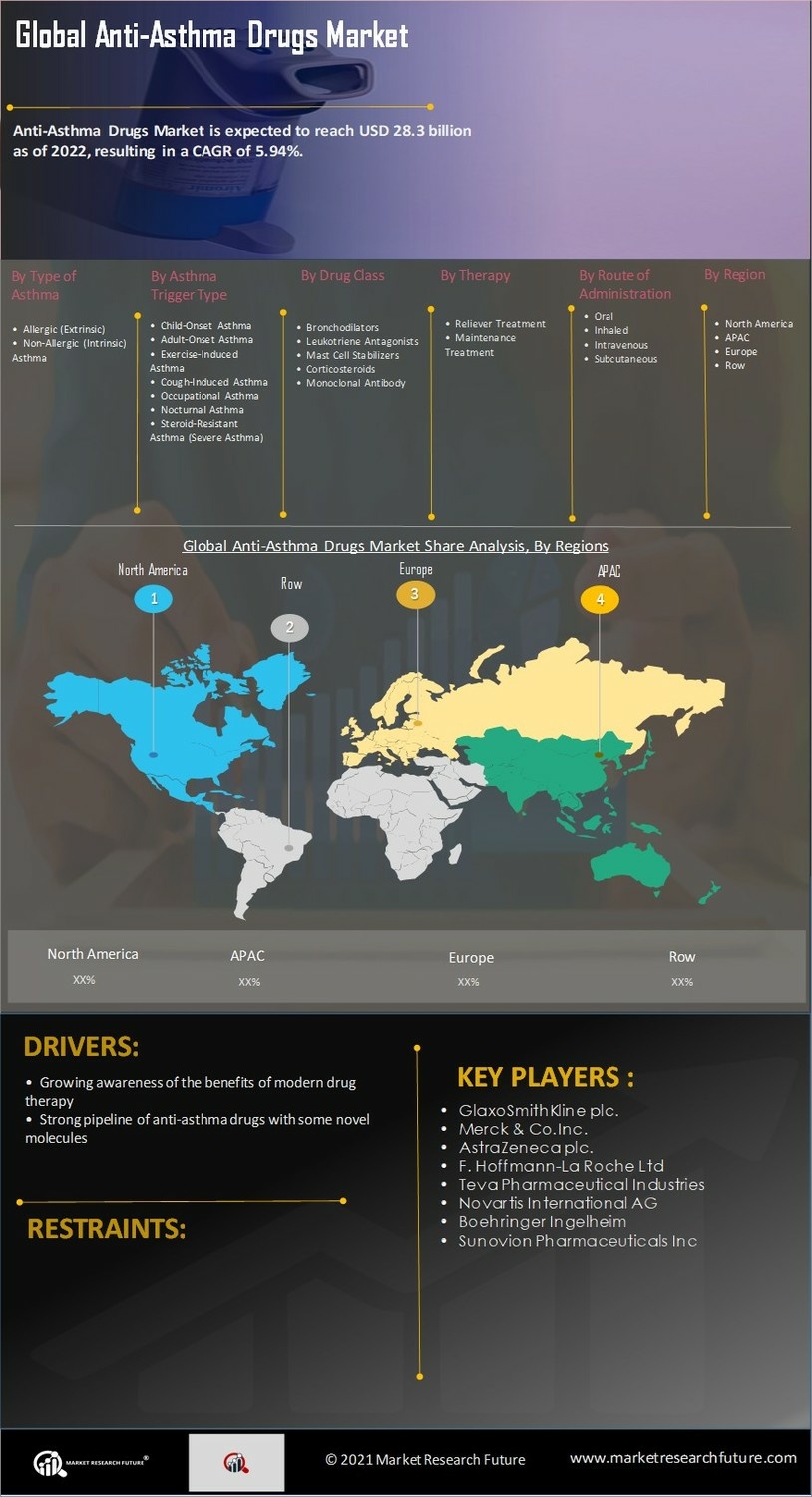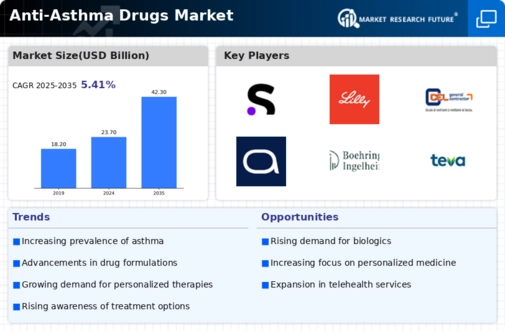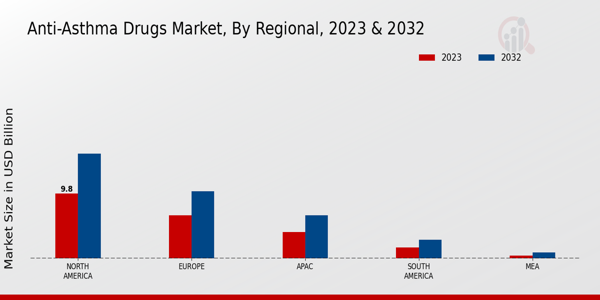Market Growth Projections
The Global Anti-Asthma Drugs Market Industry is projected to experience substantial growth over the coming years. With a market size anticipated to reach 23.7 USD Billion in 2024 and further expand to 42.3 USD Billion by 2035, the industry is poised for a significant transformation. The compound annual growth rate (CAGR) of 5.41% from 2025 to 2035 indicates a robust trajectory, driven by factors such as increasing prevalence of asthma, advancements in drug development, and rising healthcare expenditures. These projections underscore the dynamic nature of the market and the ongoing need for effective asthma management solutions.
Rising Prevalence of Asthma
The increasing prevalence of asthma globally serves as a primary driver for the Global Anti-Asthma Drugs Market Industry. According to health statistics, asthma affects approximately 300 million individuals worldwide, with numbers projected to rise due to urbanization and environmental factors. This growing patient population necessitates effective treatment options, thereby expanding the market for anti-asthma medications. The Global Anti-Asthma Drugs Market is expected to reach 23.7 USD Billion in 2024, reflecting the urgent need for innovative therapies to manage this chronic condition.
Growing Awareness and Education
The growing awareness and education surrounding asthma management play a pivotal role in driving the Global Anti-Asthma Drugs Market Industry. Public health campaigns and educational initiatives have significantly improved understanding of asthma symptoms, triggers, and treatment options. This heightened awareness encourages patients to seek medical advice and adhere to prescribed therapies, ultimately increasing the demand for anti-asthma drugs. As more individuals recognize the importance of effective asthma management, the market is likely to experience sustained growth, reflecting the ongoing commitment to improving respiratory health.
Regulatory Support and Approval
Regulatory support and streamlined approval processes for new anti-asthma drugs are vital drivers of the Global Anti-Asthma Drugs Market Industry. Regulatory agencies are increasingly adopting expedited pathways for the approval of innovative therapies, which accelerates the availability of new treatment options for patients. This supportive regulatory environment fosters investment in research and development, encouraging pharmaceutical companies to bring novel anti-asthma medications to market. As a result, the market is expected to benefit from a diverse range of therapeutic options, further enhancing its growth potential.
Advancements in Drug Development
Innovations in drug development significantly contribute to the expansion of the Global Anti-Asthma Drugs Market Industry. Recent advancements in biologics and personalized medicine have led to the introduction of targeted therapies that offer improved efficacy and safety profiles. For instance, monoclonal antibodies have emerged as effective treatments for severe asthma, enhancing patient outcomes. These developments not only address unmet medical needs but also stimulate market growth, with projections indicating a market size of 42.3 USD Billion by 2035, driven by ongoing research and development efforts.
Increased Healthcare Expenditure
Rising healthcare expenditure across various regions is a crucial factor propelling the Global Anti-Asthma Drugs Market Industry. Governments and private sectors are investing more in healthcare infrastructure and services, which includes funding for asthma management programs. This increased investment facilitates access to anti-asthma medications, thereby enhancing treatment adherence and patient outcomes. As healthcare spending continues to rise, the market is poised for growth, with a projected compound annual growth rate (CAGR) of 5.41% from 2025 to 2035, indicating a robust future for anti-asthma drug development.














